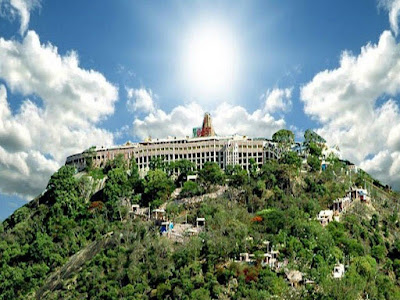 |
| Image Copyright: Virtos Media |
Our beliefs play a crucial role in shaping our identity and guiding our actions. Often, we find ourselves born into a religious order, influenced by familial and communal ties that mold our cultural perspectives. Conformity to these norms can be a powerful force, as deviating from them may mark us as outsiders.
However, it is essential for individuals to scrutinize their beliefs, as blindly adhering to or choosing a religion without introspection can hinder personal growth and understanding.
Faith has accompanied humanity since its earliest days, evolving as a response to the mysteries of existence that eluded scientific comprehension. Across diverse cultures, similar deities emerged to explain natural phenomena, such as sky deities, rain deities, mountain deities, and creators often referred to as Gods. Questions about life beyond death led to the formulation of afterlife concepts like reincarnation, judgment, hell, and heaven.
As civilization progressed, religious systems expanded to encompass not only concepts of God and the afterlife but also philosophical and legal frameworks intended to guide and control society. Some religions embraced liberal views, while others adhered to more rigid doctrines.
This article seeks neither to promote atheism nor encourage blind rebellion against one's religion. Instead, it advocates for the exploration, research, and analysis of personal belief systems. Blind faith is cautioned against, as individuals are encouraged to engage their minds in critical reasoning to ascertain the truth in what they believe.
For those reading this, the advice is to study various religions with an open mind. Delve into the scientific aspects and logic underpinning their tenets. Ask yourself what benefits the chosen religion might bring. Does it contribute to personal growth? Does it positively impact those around you? Understanding the historical context is crucial: How did the religion fare throughout history? What impact did it have on the contemporary world?
Evaluating the ethical aspects, such as the acceptance of the religion, whether coerced or voluntary, adds depth to the decision-making process.
In the meticulous examination of religious beliefs, it is imperative to scrutinize certain aspects that can profoundly shape the ethos of a faith. One such aspect is the reverence accorded to past prophets or religious figures. These figures often serve as moral exemplars and sources of guidance, influencing the ethical compass of their respective religions.
Scrutinizing the lives and teachings of these figures becomes crucial, as it provides insights into the values upheld by a particular faith. It enables individuals to discern between the core tenets that foster compassion, tolerance, and understanding, and those that may propagate rigidity or intolerance.
Moreover, a critical examination should extend to the stance a religion takes towards those who choose to depart from its fold. The treatment of individuals who decide to explore alternative paths or embrace different worldviews reflects the level of inclusivity and acceptance within a religious community. Understanding the historical context of how dissenters have been treated can unveil patterns of intolerance or, conversely, a commitment to pluralism.
A faith that encourages open dialogue and respects the autonomy of its adherents, even in matters of divergence, fosters a culture of intellectual freedom and personal growth. In this light, scrutinizing a religion's attitude towards apostasy becomes a crucial aspect of choosing a belief system that aligns with one's values and principles.
Living in an age of information abundance, individuals have the resources to make informed decisions about their beliefs. Choosing a religion is a significant decision that warrants time, careful consideration, and a thorough examination of the available information. In this era of enlightenment, let your choices be guided by thoughtful inquiry and a genuine understanding of the beliefs that resonate with your values and principles.
In the pursuit of spiritual identity, it is crucial to acknowledge that beliefs are not fixed; they evolve alongside personal experiences, societal shifts, and the acquisition of knowledge. Change is, after all, unavoidable.
Embrace the beauty of impermanence. The dynamic nature of belief systems underscores the significance of continuous self-reflection and a willingness to reassess one's convictions. This adaptability can cultivate a more resilient and authentic faith that aligns with an individual's evolving understanding of the world.








.jpg)



